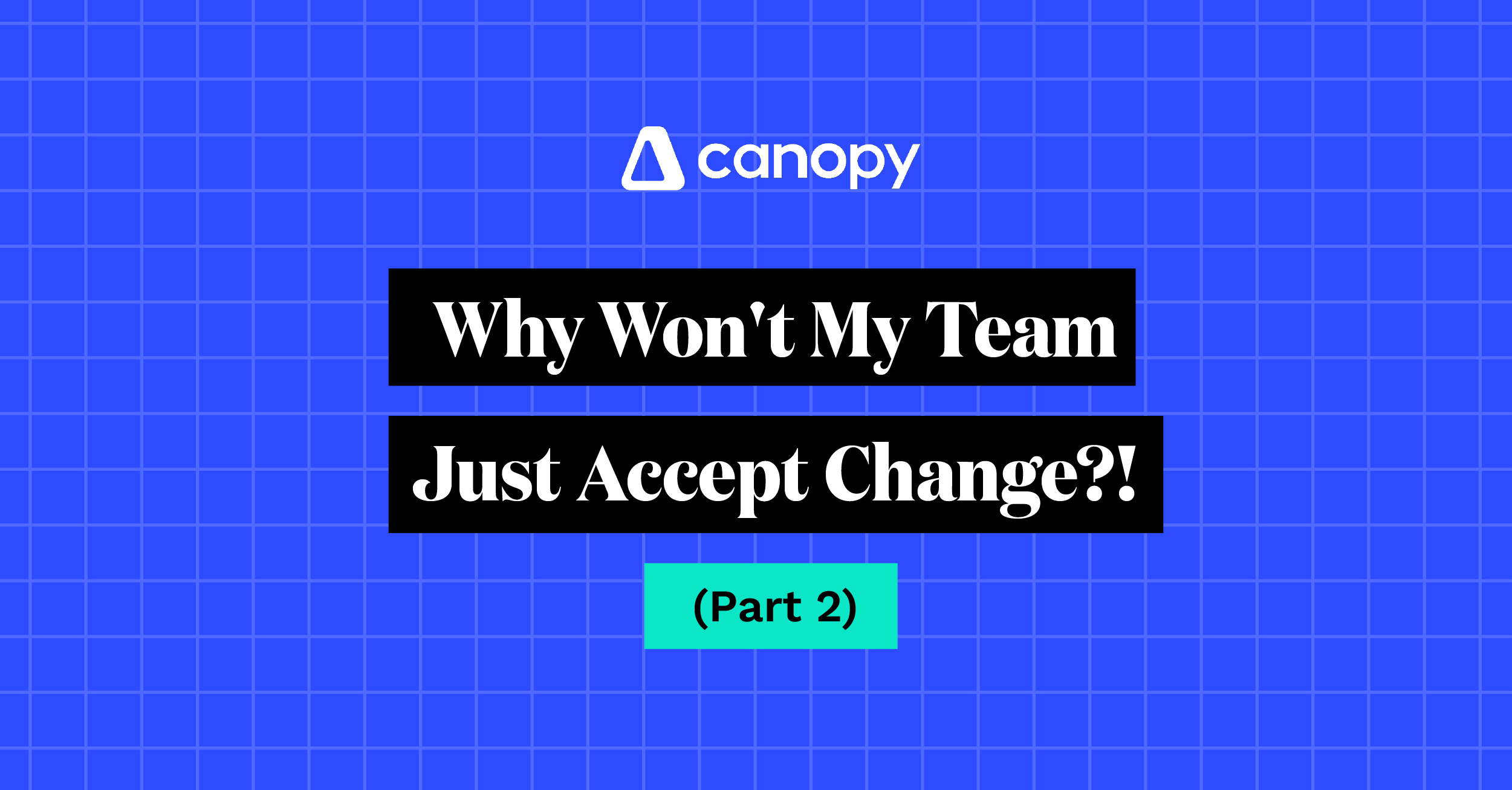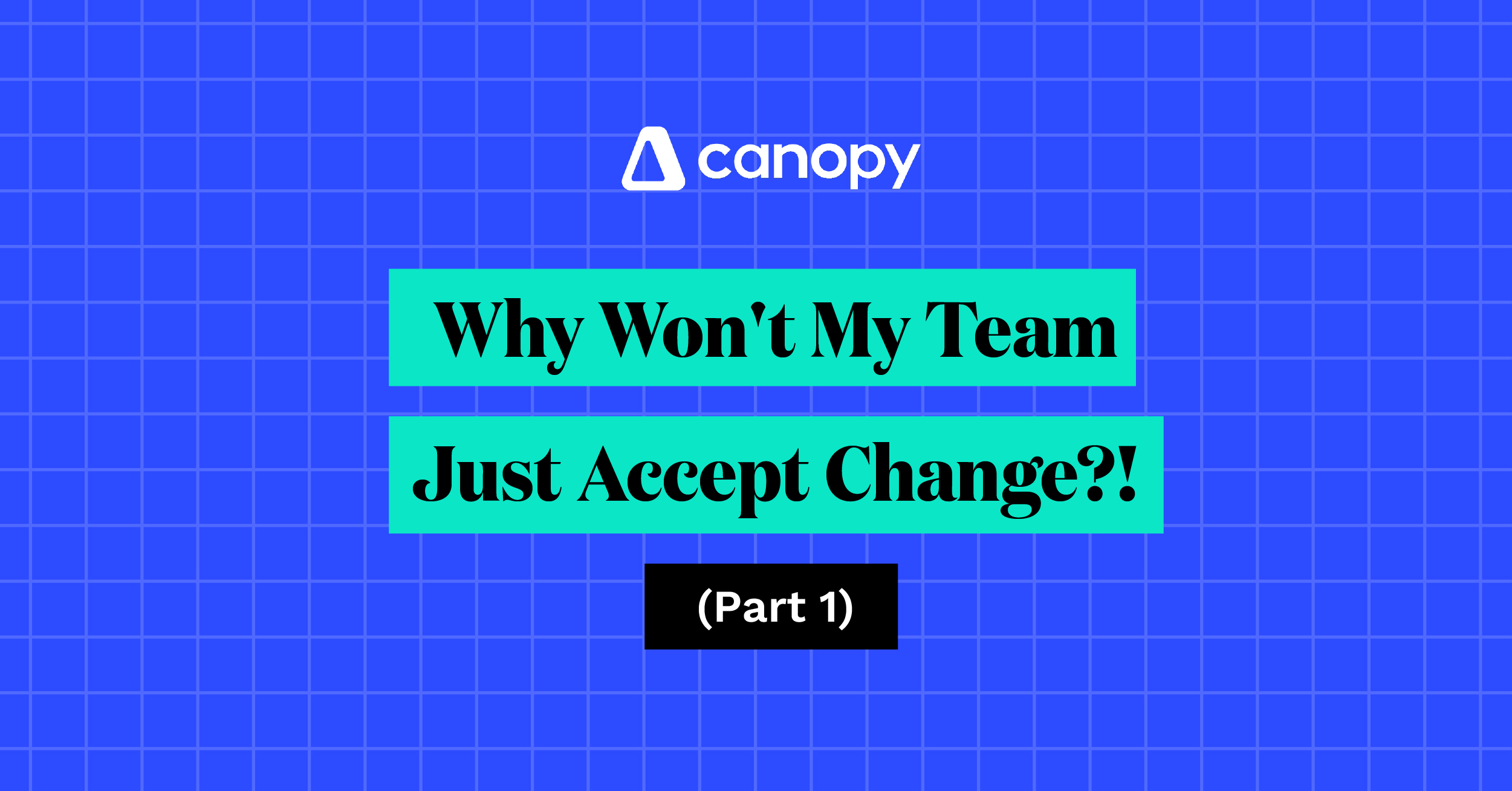Welcome back!
If you read the first part of this blog, I talked briefly about why people and organizations resist change. You are trying to improve the firm with a fantastic idea, piece of software, process, etc, and you keep hitting roadblocks.
Concepts on why we resist change are all fine and good, but let's talk about:
How can we get others to accept change?
There are tons and tons of books and articles out there on change management. I know you don't want to sift through the thousands and thousands of pages on it like I have (one lady even had a 75+ page PowerPoint deck on it for her presentation last year! Holy cow!).
How about I summarize a bunch of the core concepts for you here?
In order to effectively institute change in any organization, you have to address the 5 "R's."
The 5 "R's" are the KEY FACTORS to consider when making a change
- What is the REASON?
- What is the ROI?
- What are the RISKS?
- What are the RESOURCES?
- Who is RESPONSIBLE?
What's elegant about this (besides the nifty alliteration) is that each item flows into the next. If you can identify the reason for making a change, you can immediately discuss the ROI associated with that change. When you determine the ROI, you will almost naturally turn right toward asking yourself what happens if it all goes wrong (risk). When you ask what could go wrong and why, "do we even have the resources to pull this off?" is a risk that you will address. Once you have pinned that down, someone needs to do the work to make it happen.
I know that sounds simple, but that's because it is. Don't just change because something is that shiny object that looks cool. Stop and assess IF it's worth doing, quantify that worth, plan for how it could go wrong, make sure you have the time and money to do it and have a champion take the lead that is responsible for its success. Miss a step, and you set yourself up for failure (or at least a stall out).
I could get fancy and start citing all the studies supporting this methodology, but I'm also trying to keep this simple so you don't have to go cross-eyed reading an even longer blog.
If you take the time to analyze these items and gain clarity around each one, you are 100 miles ahead of your competition and still accelerating.
Of course, those are the FACTORS to consider… what steps do you need to take to implement successful change? We accountants do LOVE our steps and processes.
OK, you got me. Here are the 5 STEPS for implementing change:
- Create Awareness
- Form a Desire
- Initiate Ownership
- Construct Solutions
- Build Acceptance
Once you have built your outline of the 5 R's, you need people to take action on this genius piece of change you have in mind.
To do this, you must first make the entire team aware of the problem you are trying to solve or the opportunity you are trying to seize. Create awareness by telling people about your concerns or excitement. Talk with them about it and even identify how the lack of change may be impacting them. This is where SO many firm owners fail. They forget that their team hasn't already stewed on this opportunity before like they have. The team needs time to understand and think about it like you did.
As more and more people become aware of the need for change, the desire for a solution will build. As your team gains awareness, they will likely suggest solutions you have yet to consider. I have discovered that these suggestions are often better than anything I could have ever dreamed up. Fan the flame of shared innovation any chance you can get. You are building leaders by doing so. How cool is it that you may have more geniuses in the making?
As that desire for improvement builds, you want to identify who is most excited about the possibilities. These people are your champions. Their excitement inherently triggers an ownership of the outcome. You need their ownership to help bring your change to the finish line.
From there, you work with these champions to identify possible solutions and narrow it down to a single choice. Construct the solution that best fit your organization, budget, timeline, goals, etc. While you may already have identified the piece of software you want to buy, the change in your process, the new pricing model, or the new line of services you want to offer, you need to allow the team of champions to come to the same (or better) conclusion.
Once you have decided with these champions, you not only have a greater chance of success, but you also (and this is important) have more people who are there to reinforce the implementation after the fact.
Change doesn't usually fail at implementation; it fails with consistent adoption.
You and your champions MUST be evangelical about creating new habits that make this change part of your firm's DNA. Use the 5 R's when communicating organizationally, especially when someone resists the change. You didn't make this change on a whim. Make sure that it is understood that there are well-thought-out reasons for the change and how it benefits everyone.
Additionally, you want everyone to adopt a "This is how we do it now" level of acceptance, with everyone rowing in the same direction. Over time, you have new habits, and change is no longer extended;, it's the norm.
If you have not noticed, you can't make anyone accept change. People don't like change for change's sake, but they accept change that they believe will improve their lives. Working WITH your team to be better means you don't have to make your team do anything. They do it themselves.
Whether you are exploring a change in your practice management software, deciding if you want to hire, changing banks, trying to add new advisory services, or just deciding if you should cater in food on each tax deadline, making decisions and changing the habits you and your organization have is NOT easy. It does take effort and thought.
Where do you find the time for this effort and thought? Well, that's a different blog for a different day. Regardless, a well-thought-out plan has a much greater chance of success than "winging it." If the change will make you better, more profitable, more competitive, and happier, isn't it worth the effort to get it right?

Sean M Duncan, CPA, is the President and Founder of SMD Consulting & Accounting, LLC, Chief Proactive Advisors, LLC, and Helping Hand RIA, LLC. SMD Consulting & Accounting, LLC has gained national recognition as an advisory-focused CPA firm specializing in fixed-fee project and subscription services to help business owners and individuals with tax reduction, asset protection, wealth accumulation, and success on their terms. As the "Chief Proactive Advisor," Sean leverages his experiences from creating an advisory firm and helps fellow professionals transition from a reactive to a proactive approach. His methodology accelerates the building of more lucrative and fulfilling advisory practices. His 6-step transformative framework was developed over his 25+ years in the profession.
READ MORE BY Sean






Get Our Latest Updates and News by Subscribing.
Join our email list for offers, and industry leading articles and content.